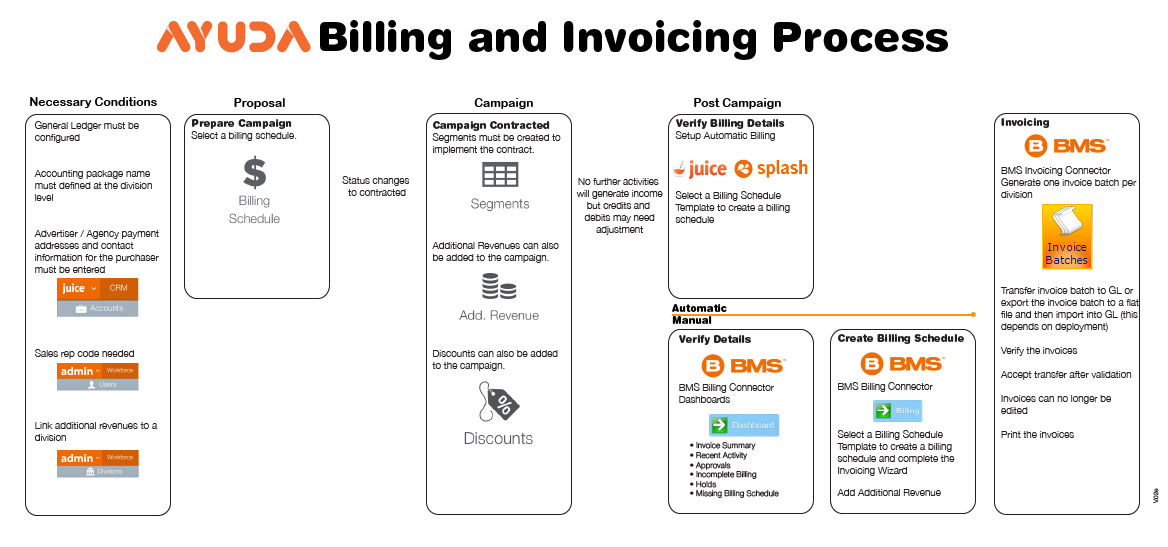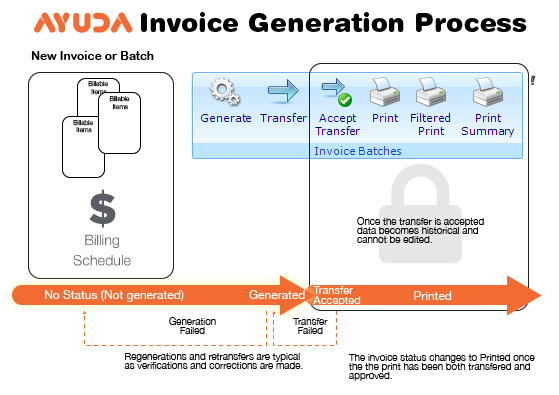Broadsign Ayuda has two ways for managing billing: automatic and manual. Both share the same information and do the same job: grouping billable items into invoices.
When Broadsign Ayuda is deployed at a customer, billing schedules are created to meet your existing business practices. From then on, sales users, chartists and digital schedulers select the most appropriate billing schedule when creating proposals or working on campaigns. The billing schedules automatically divide the billable items into the requisite number of timed invoices. If billable items are added or subtracted from the campaign, automatic billing updates the records, well... automatically.
Automatic billing is easiest to use and the most error-free and regularized.
Broadsign Ayuda typically recommends its customers use automatic billing since it reduces the risk of error as well as time and cost of handling the data. Manual billing is best used for single items that do not reoccur or for exceptions when very detailed granular control may be needed.
The manual billing process is described in the Manual Billing section.
Companies can have many divisions. The division associated with the campaign's operations may not be the division responsible for payment. Ensure that the correct selling division is selected in the campaign so that invoices are mailed to the correct address.
Two types of calendars are used in invoicing:
Billing calendars use the twelve calendar months.
- These start on the first of the month in which the relevant segment starts.
- These end on the last day of the month in which the relevant segment ends.
Broadcast calendars are usually based on the lunar calendar, which is four weeks to a month for a total of thirteen months.
- These use the first day of the Period Start Date.
- Broadcast calendars always start on Mondays and end on Sundays.
Finance users use BMS to complete the invoicing process: invoices are generated, verified and corrected and reproved if necessary, transferred to the general ledger and printed for physical distribution.


